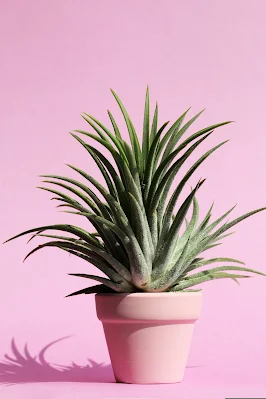Main types of mudras based on their function and use:Hasta Mudra (Hand Gestures),Gyan Mudra (for knowledge), Mana Mudra (Head Mudras
---
1. Hasta Mudra (Hand Gestures)
These involve only the hands and fingers. They are the most commonly practiced mudras in yoga and meditation.
Examples:
Gyan Mudra (for knowledge)
Prana Mudra (for energy)
Apana Mudra (for detoxification)
Vayu Mudra (for balancing air element)
---
2. Mana Mudra (Head Mudras)
These involve the eyes, ears, nose, tongue, and lips, and are used primarily for inner focus and concentration.
Examples:
Shambhavi Mudra (eyebrow center focus)
Khechari Mudra (tongue lock)
Nasikagra Drishti (nose tip gazing)
---
3. Kaya Mudra (Postural Mudras)
These are whole-body gestures or postures that combine asanas with mudra and meditation.
Examples:
Viparita Karani Mudra (inverted posture)
Yoga Mudra (symbol of unity)
Prana Mudra (full-body energy pose, different from hand gesture
---
4. Bandha Mudra (Energy Locks)
These involve muscle contractions (locks) that help direct the flow of prana (life force energy) within the body.
Examples:
Mula Bandha (root lock)
Uddiyana Bandha (abdominal lock)
Jalandhara Bandha (throat lock)
---
5. Adhara Mudra (Perineal Gestures)
These are focused on the lower parts of the body, especially for energy control and pelvic awareness.
Examples:
Vajroli Mudra (urethral control)
Ashwini Mudra (anal contraction)
Sahajoli Mudra (for advanced practitioners)
---
Each type of mudra serves a different purpose, from calming the mind to controlling inner energy. If you’re interested in mudras for meditation or healing, Hasta Mudras are the easiest and most accessible to start with.
Gyan Mudra, also known as the Mudra of Knowledge, is a symbolic hand gesture commonly used in yoga, meditation, and spiritual practices. Here’s a simple breakdown:
How to Do Gyan Mudra:
1. Sit comfortably in a meditative posture (like Padmasana or Sukhasana).
2. Touch the tip of your index finger to the tip of your thumb.
3. Keep the other three fingers straight and relaxed.
4. Rest your hands on your knees, with palms facing upwards.
5. Close your eyes and breathe deeply.
Benefits of Gyan Mudra:
Enhances concentration and memory.
Reduces stress and anxiety.
Promotes calmness and spiritual growth.
Balances the root chakra (Muladhara).
It’s often used during meditation or pranayama practices to channel energy and enhance mental clarity
Gyan Mudra can be practiced at any time of the day, but there are some ideal conditions for maximum benefit:
---
Best Time to Practice:
Early Morning (Brahma Muhurta):
Between 4 AM and 6 AM is considered the most peaceful and spiritually charged time.
During Meditation or Pranayama:
Whenever you do breathing exercises or meditation, add Gyan Mudra for better focus and inner calm.
---
Duration:
Minimum: 15–20 minutes daily (can be split into two sessions).
Ideal: 30–45 minutes for deeper benefits.
Can be done while sitting, lying down, or even walking, though sitting in a meditative posture is most effective.
---
How Often:
Daily practice gives best results.
There's no harm in doing it multiple times a day, especially if you’re seeking clarity, calm, or focus.
/
Gyan Mudra (Mudra of Knowledge) is a powerful hand gesture in yogic practice that not only enhances concentration and spiritual growth but also helps in managing and preventing several health issues. Here's how it supports healing:
---
Diseases and Conditions Gyan Mudra Helps With:
1. Mental Health & Brain Function
Reduces Stress, Anxiety, and Depression
Promotes a calm mind and emotional stability.
Improves Memory and Concentration
Beneficial for students and professionals alike.
Helpful in Insomnia
Calms the nervous system for better sleep.
2. Neurological Disorders
Supports Relief in Parkinson’s & Alzheimer’s (as a supportive practice)
Improves neural communication when practiced regularly.
3. Head-Related Issues
Relieves Headaches and Migraines
By balancing the air element (Vayu), it soothes overactivity.
Eases Dizziness and Vertigo
4. Hormonal & Thyroid Balance
Helps in regulating hormonal imbalances when combined with other mudras and yogic practices.
5. Digestive Health
Improves metabolism and helps with minor gastric issues, though other mudras like Apana Mudra are more specific for digestion.
6. Chronic Fatigue & Lethargy
Boosts mental energy and alertness.
---
Why It Works (According to Ayurveda & Yoga Philosophy):
Gyan Mudra reduces the excess air element (Vata) and increases the space element, leading to better mental and physical balance.
Stimulates the pituitary and endocrine glands, enhancing inner awareness and immunity.
SPONSOR CONTENT
"This Content Sponsored by Buymote Shopping app
BuyMote E-Shopping Application is One of the Online Shopping App
Now Available on Play Store & App Store (Buymote E-Shopping)
Click Below Link and Install Application: https://buymote.shop/links/0f5993744a9213079a6b53e8
Sponsor Content: #buymote #buymoteeshopping #buymoteonline #buymoteshopping #buymoteapplication"




















_20240905_201608_0000.png)



